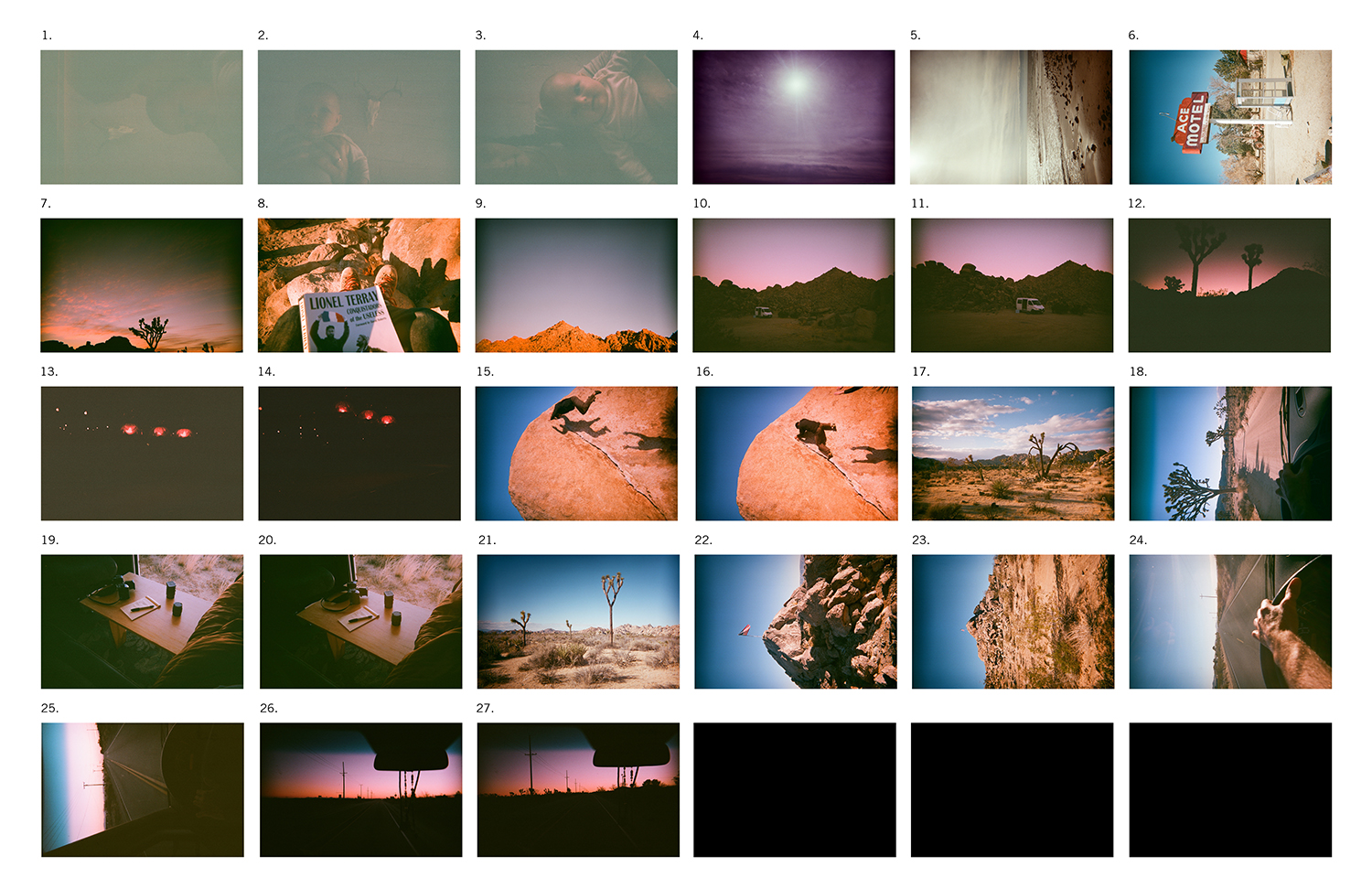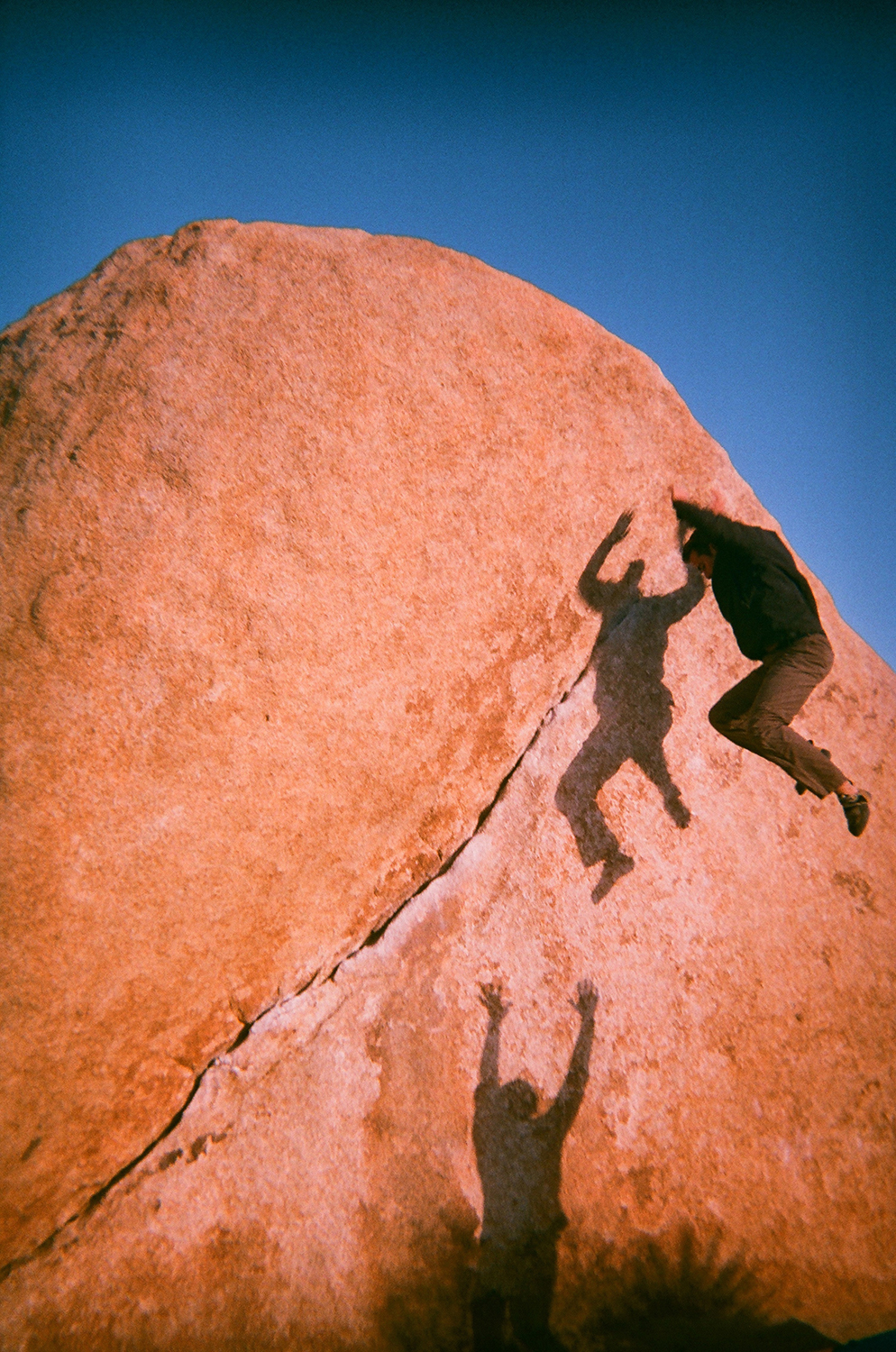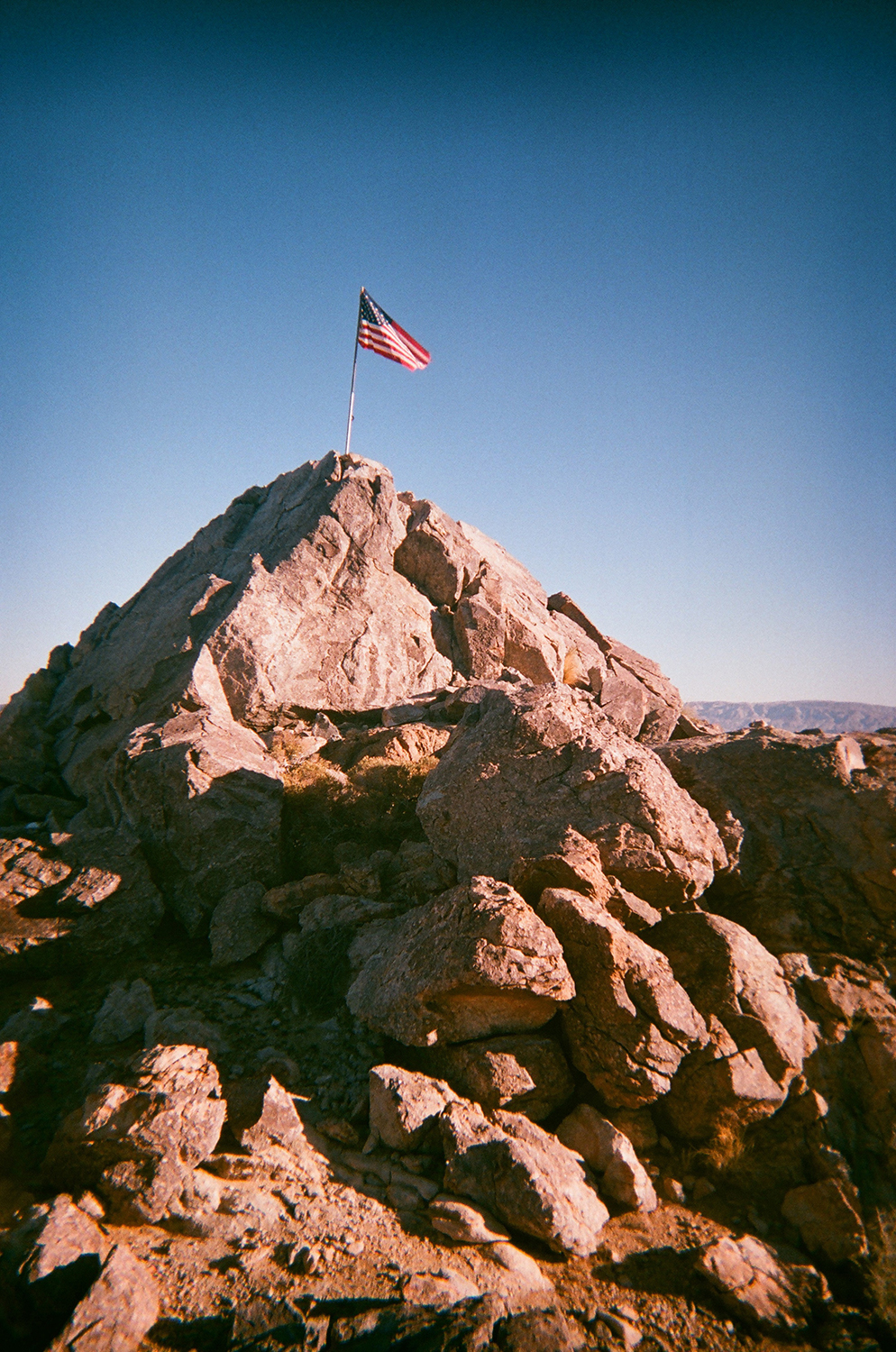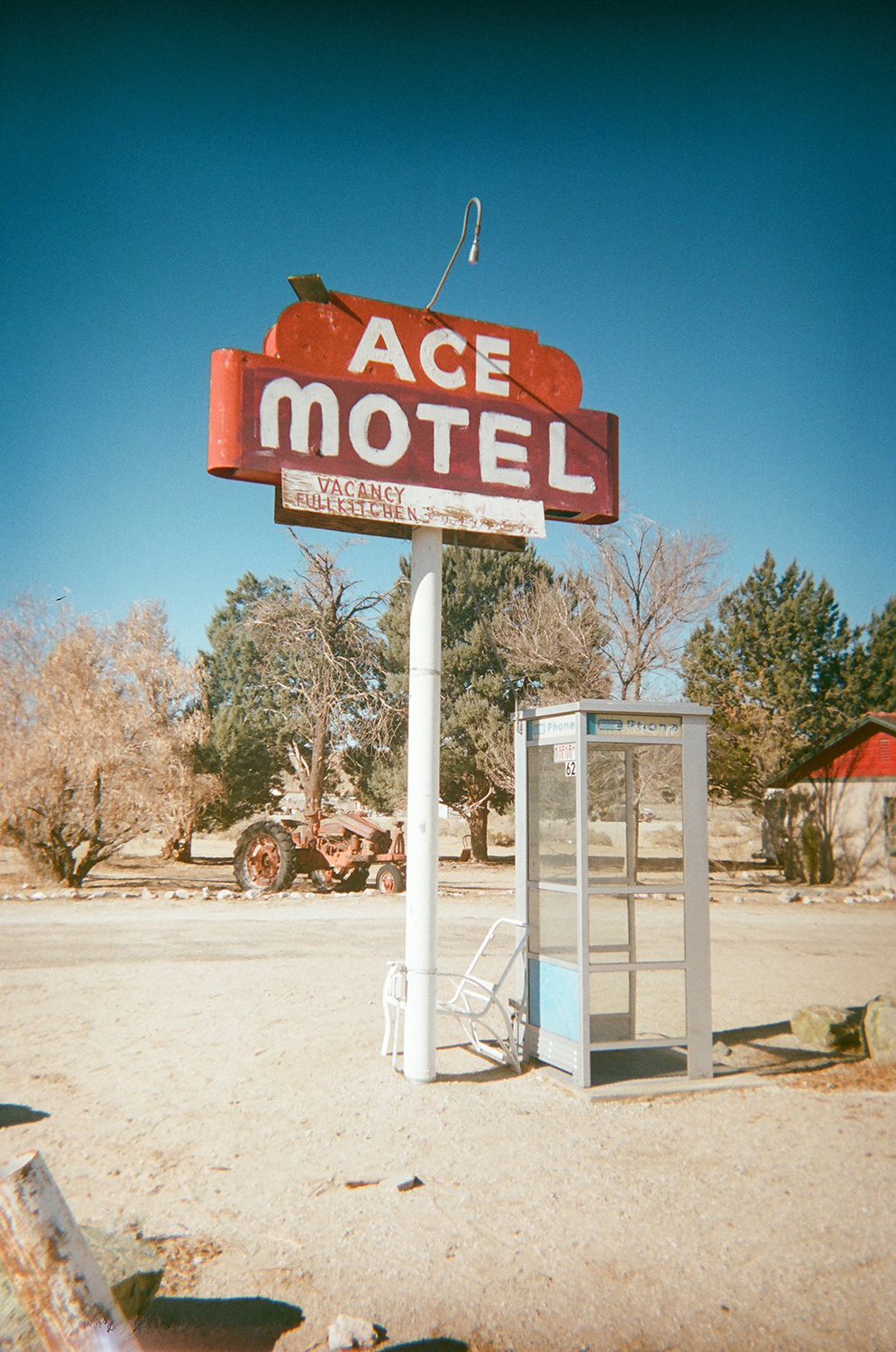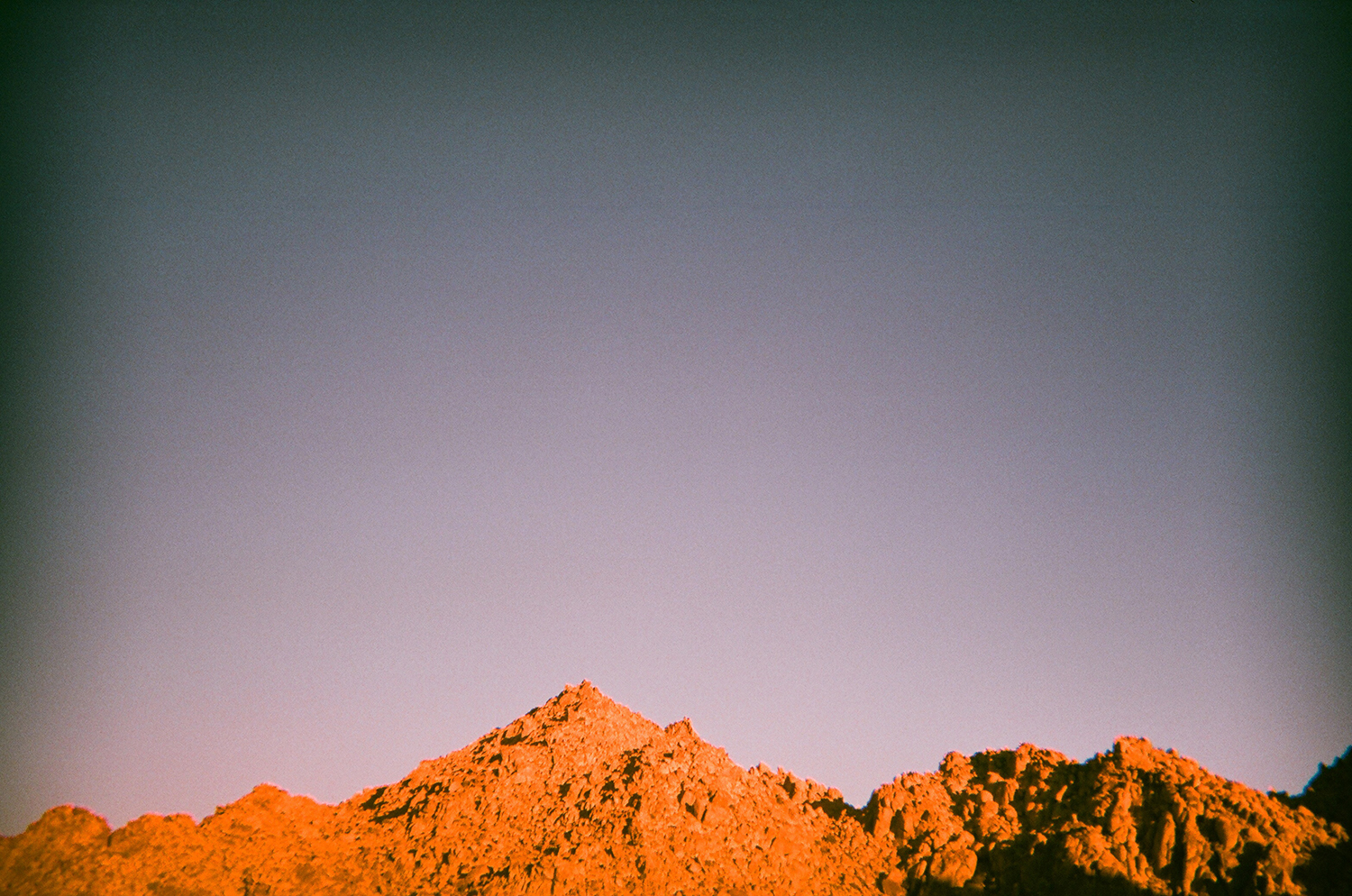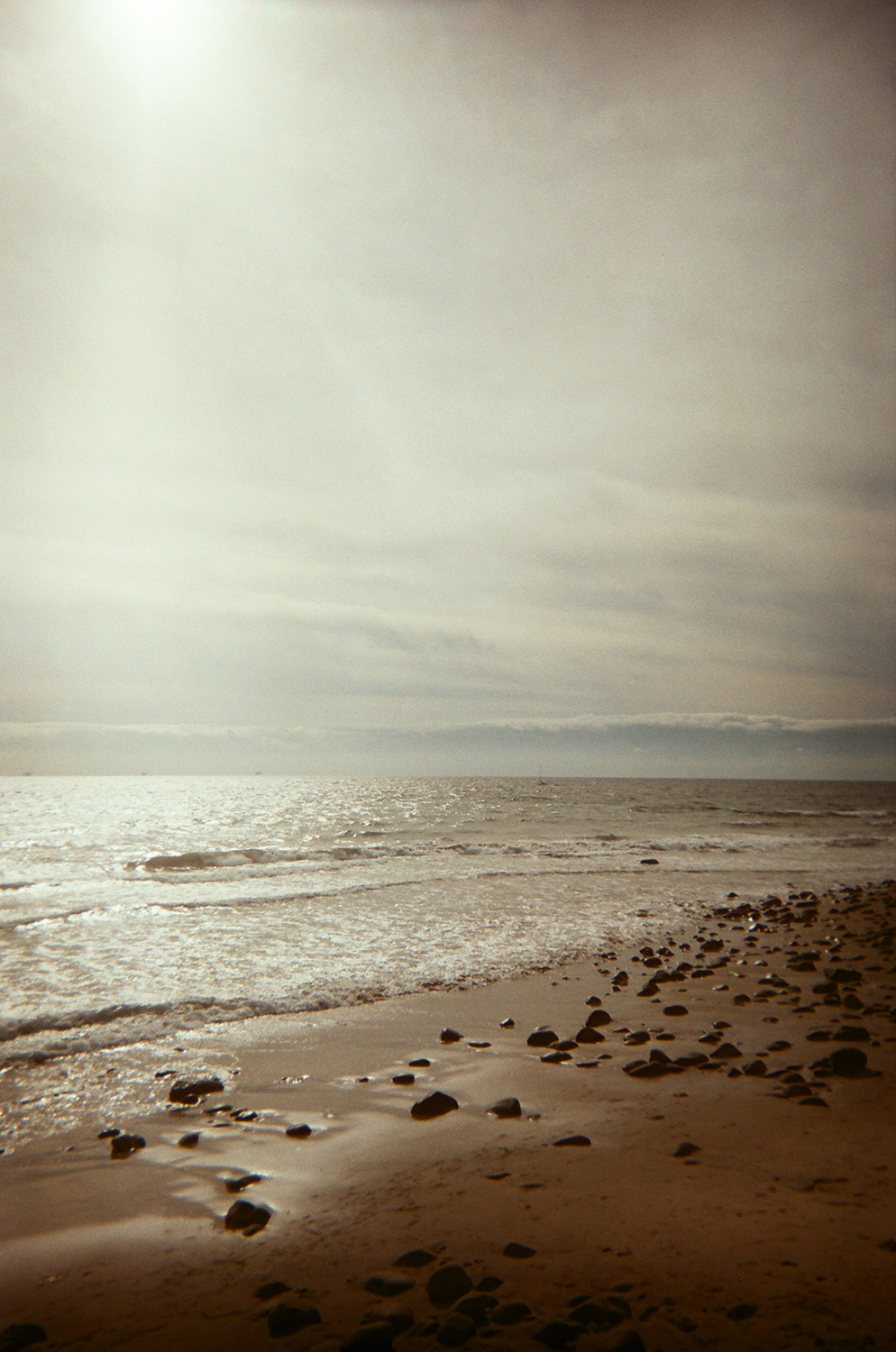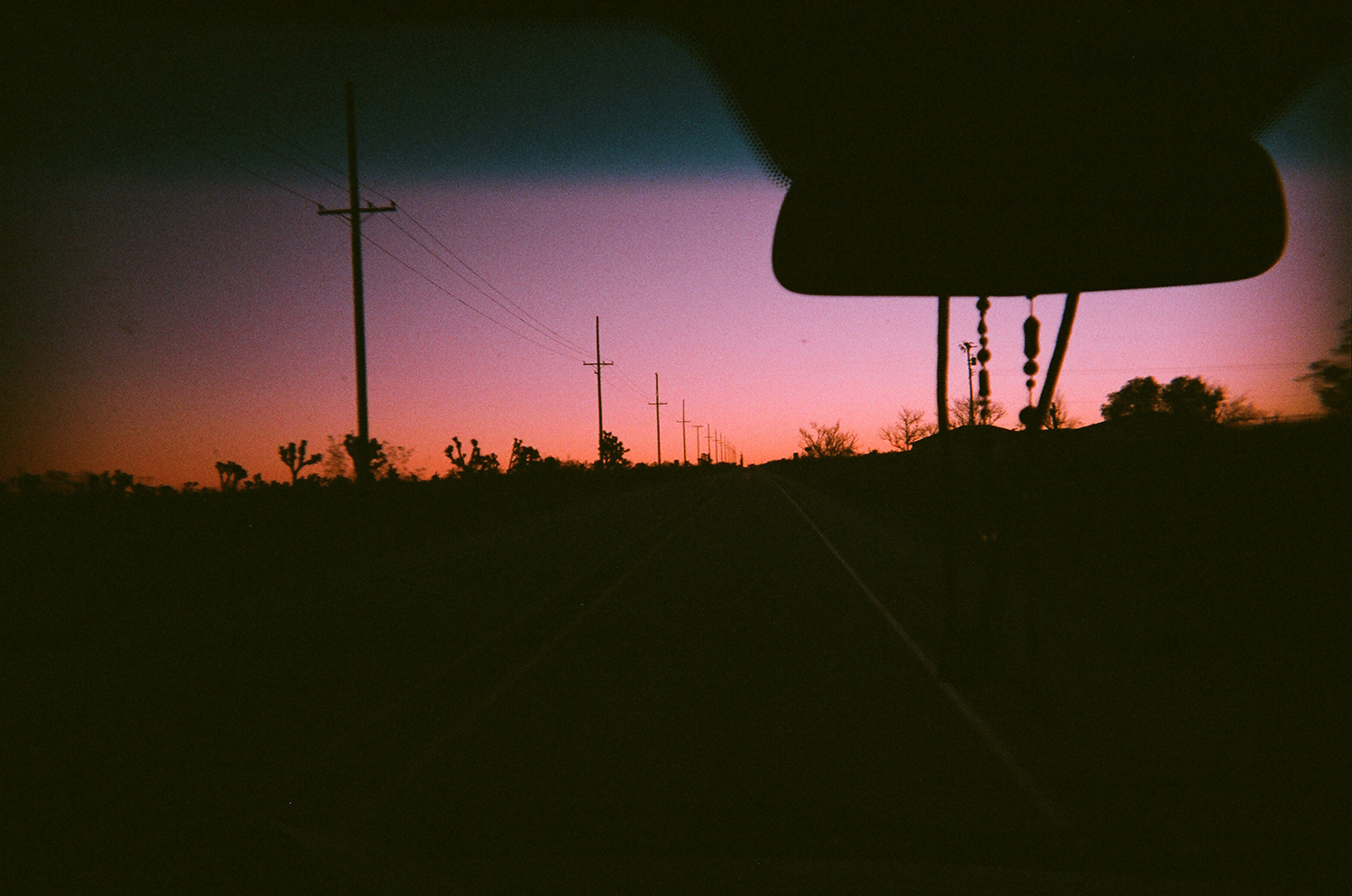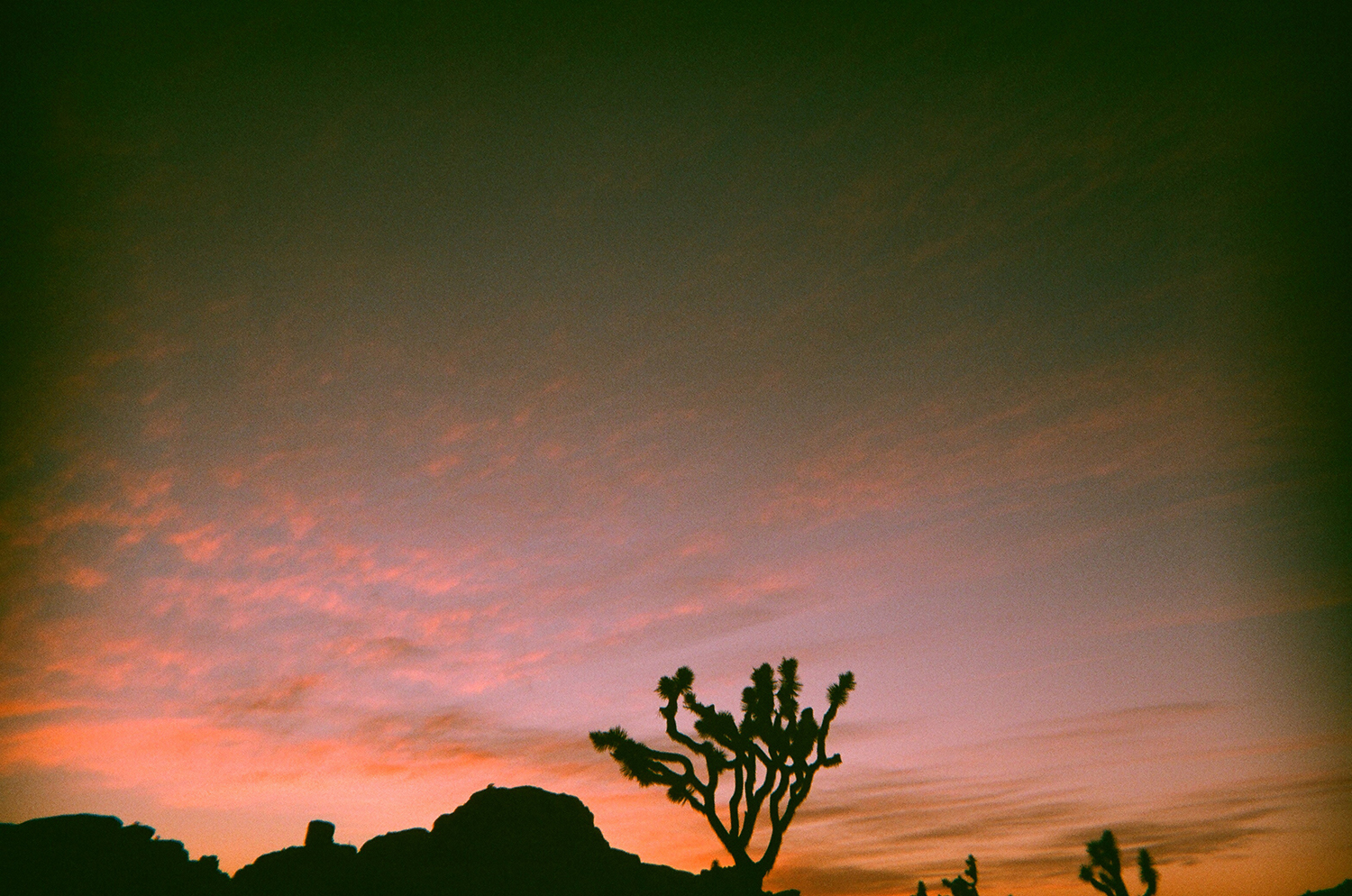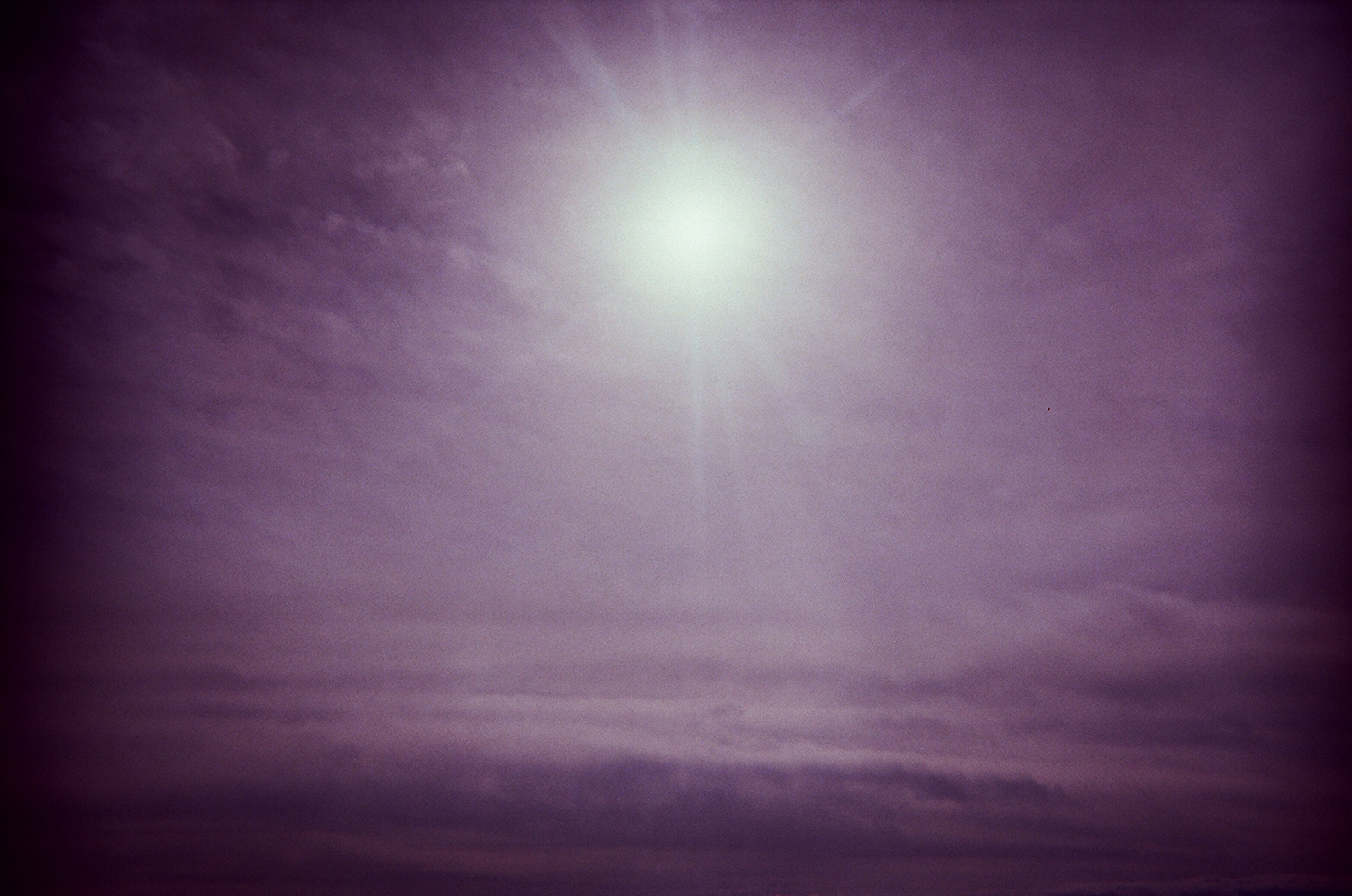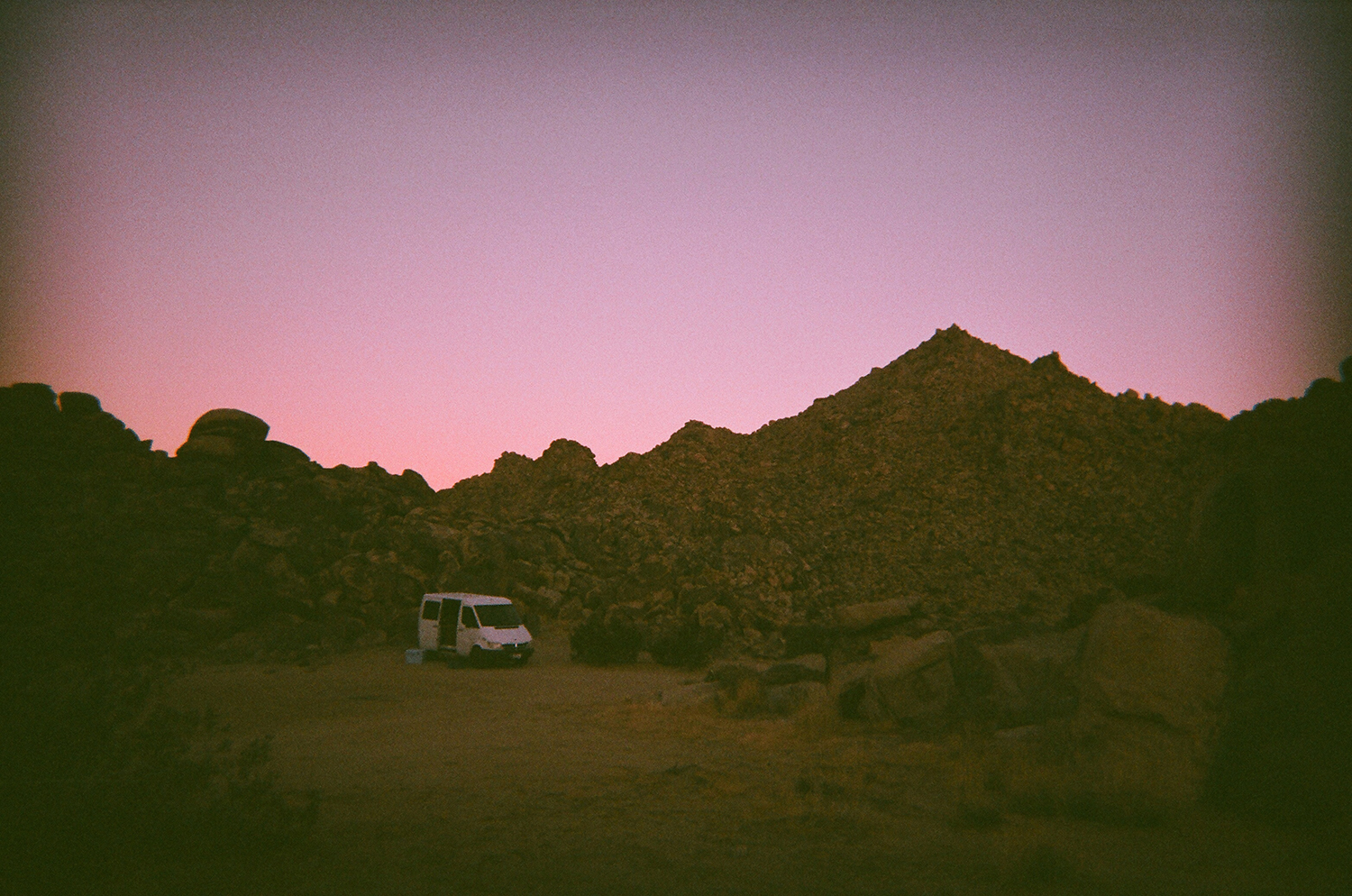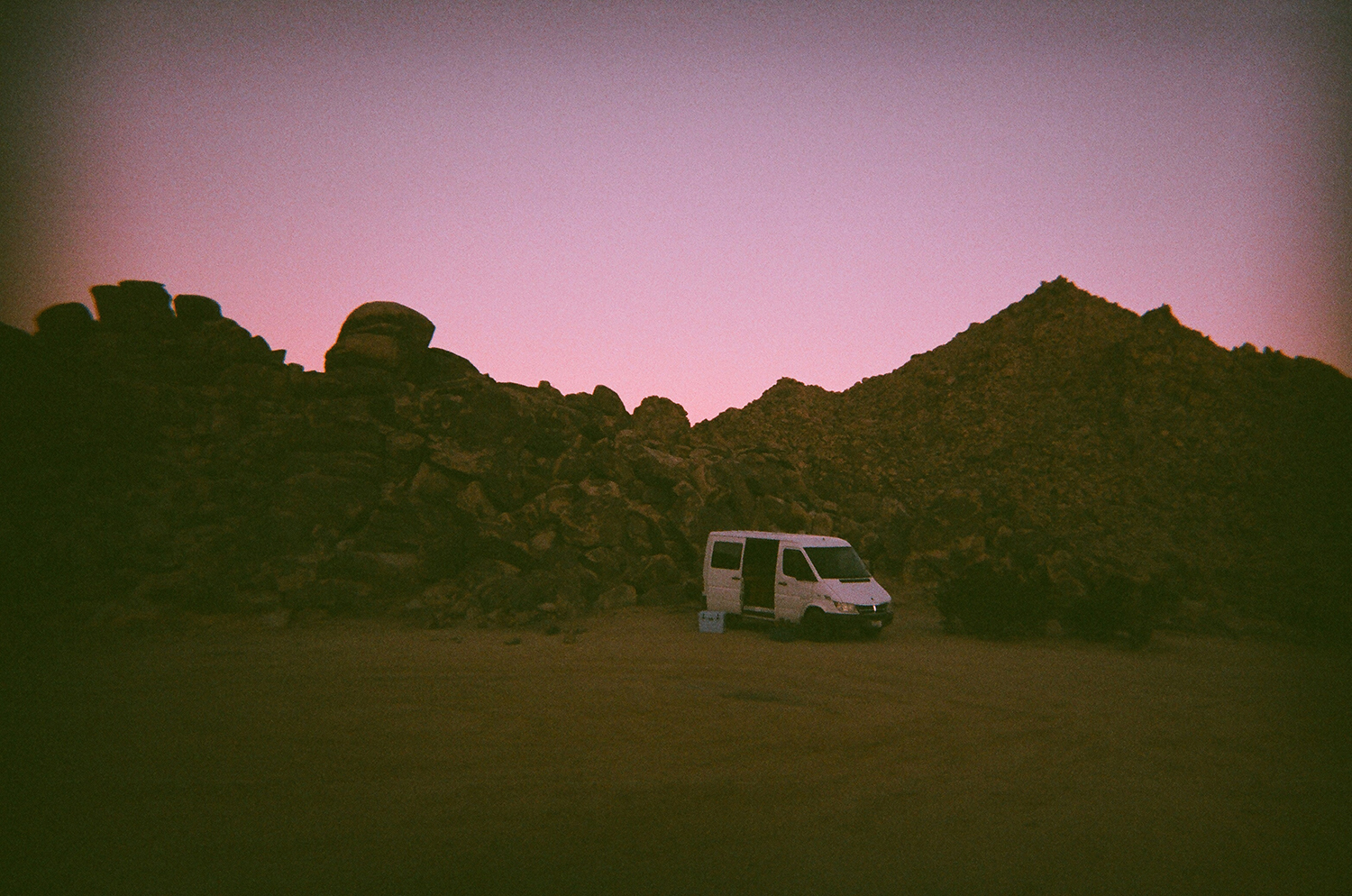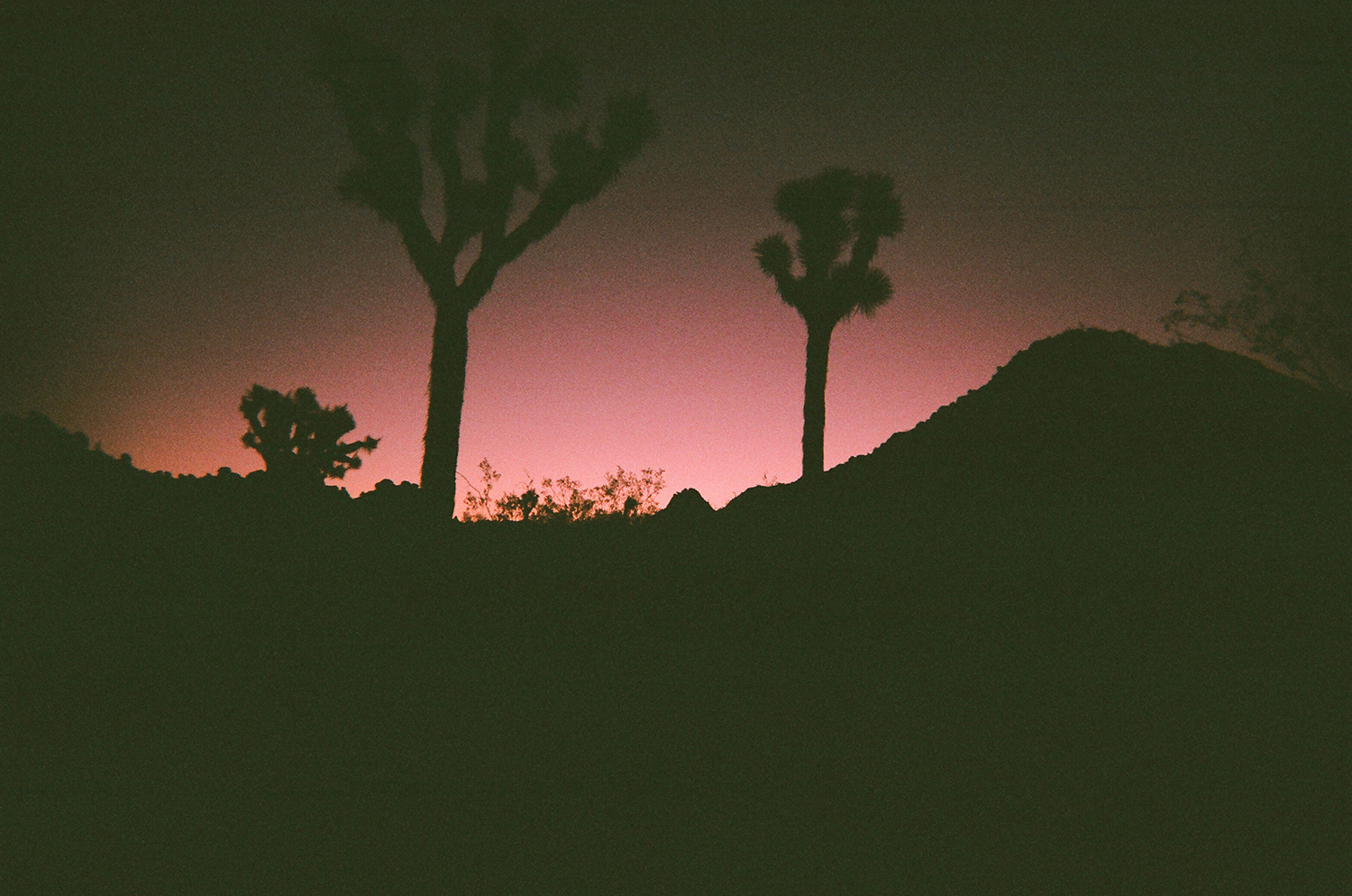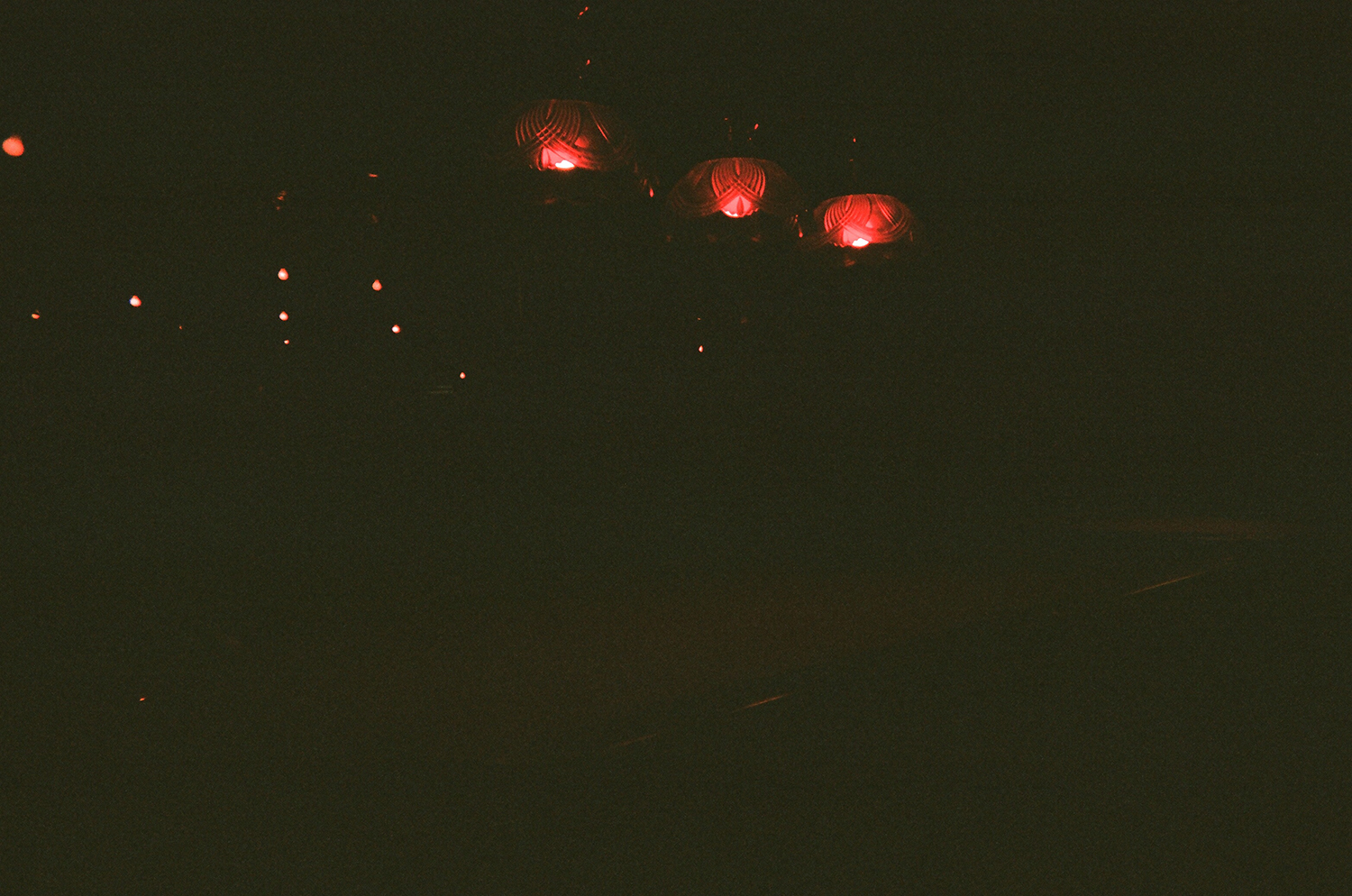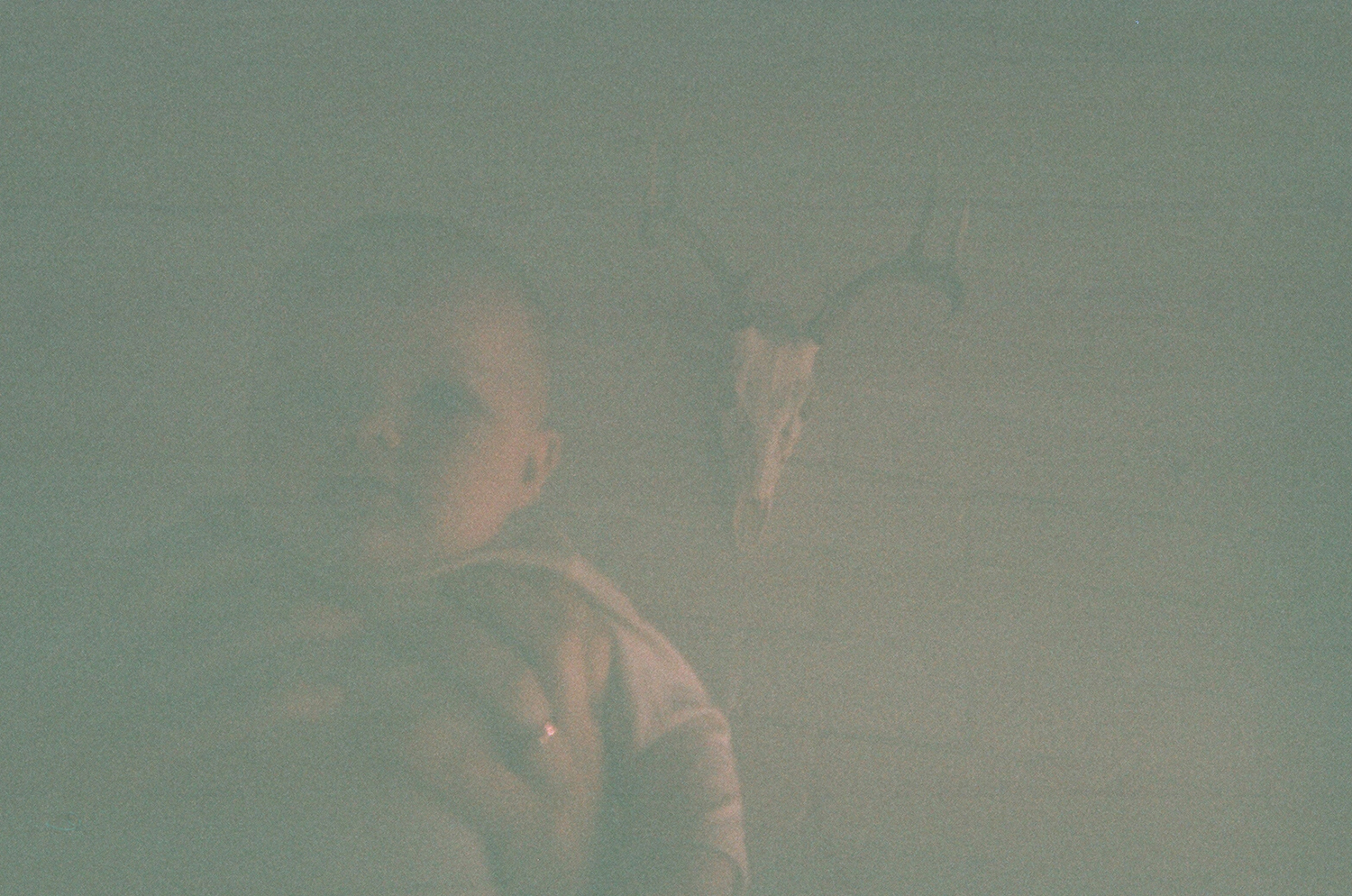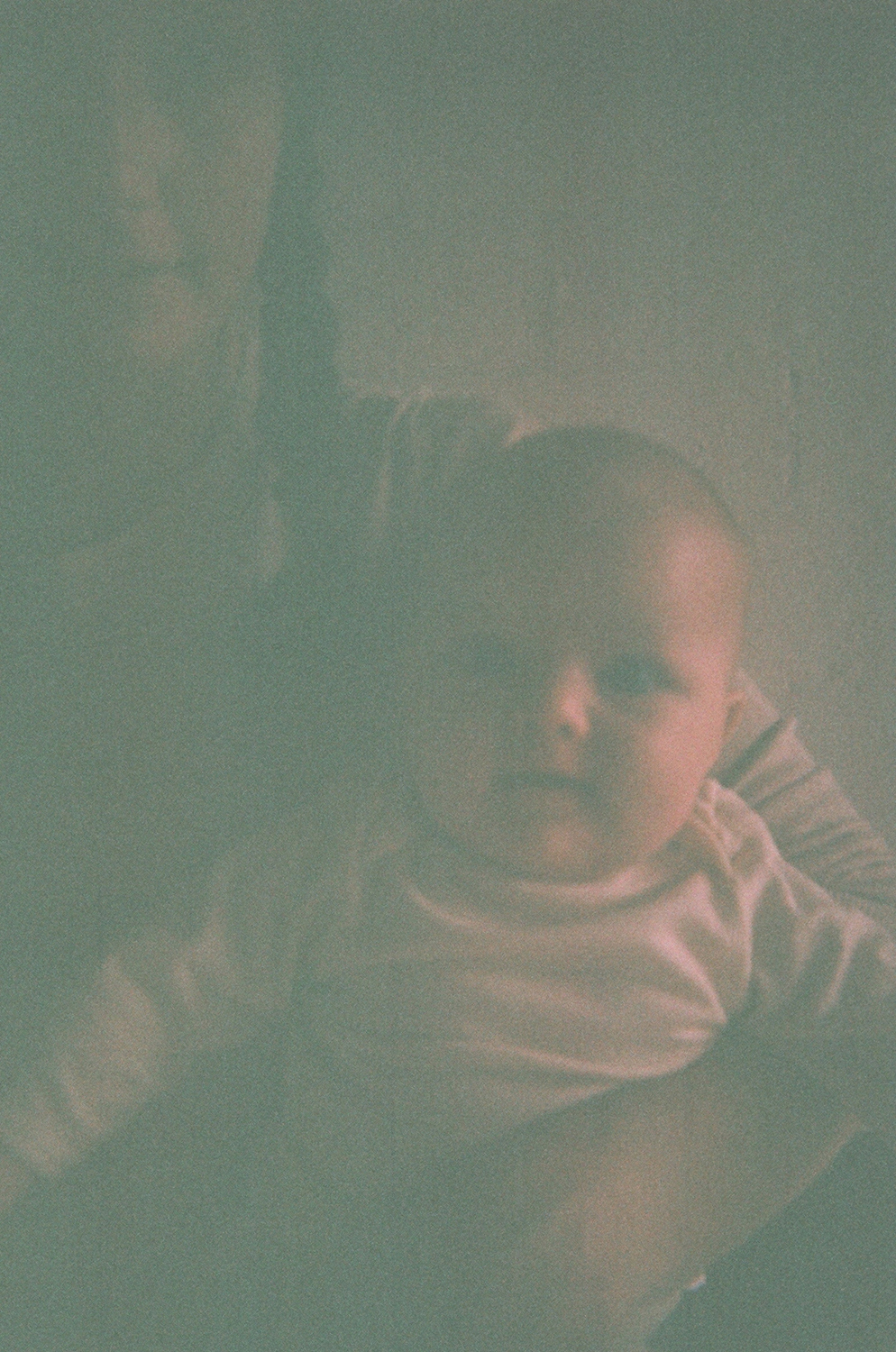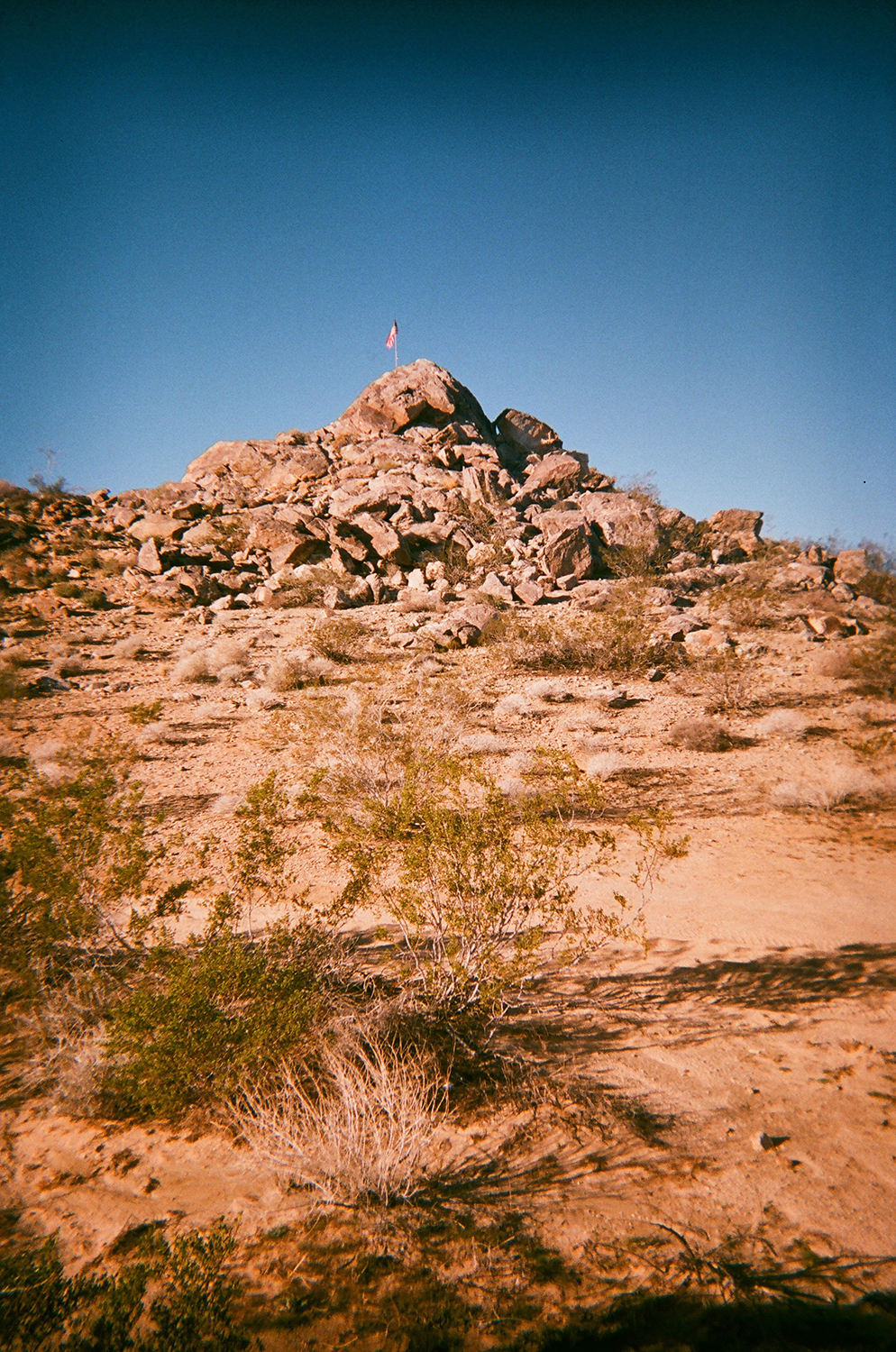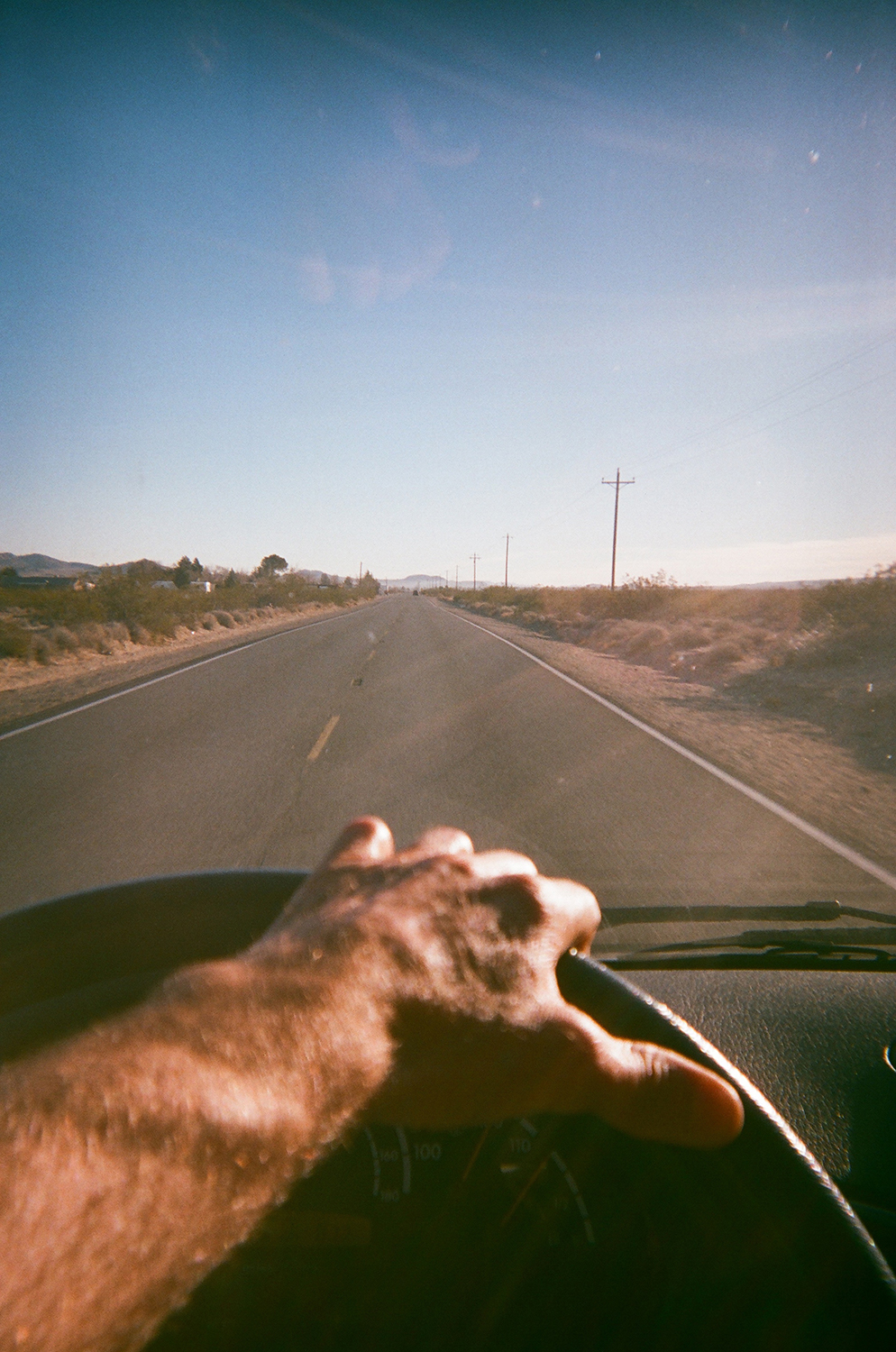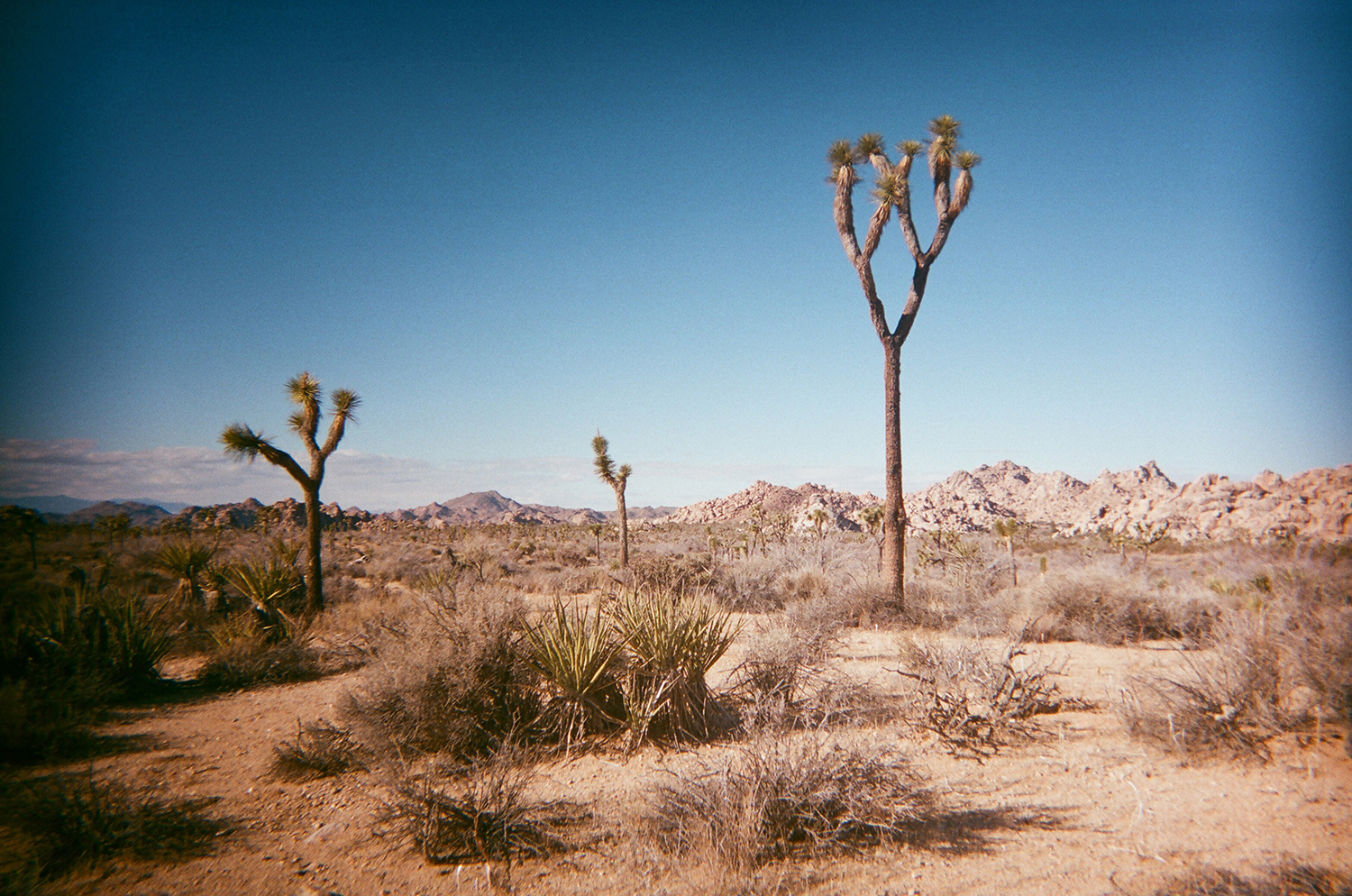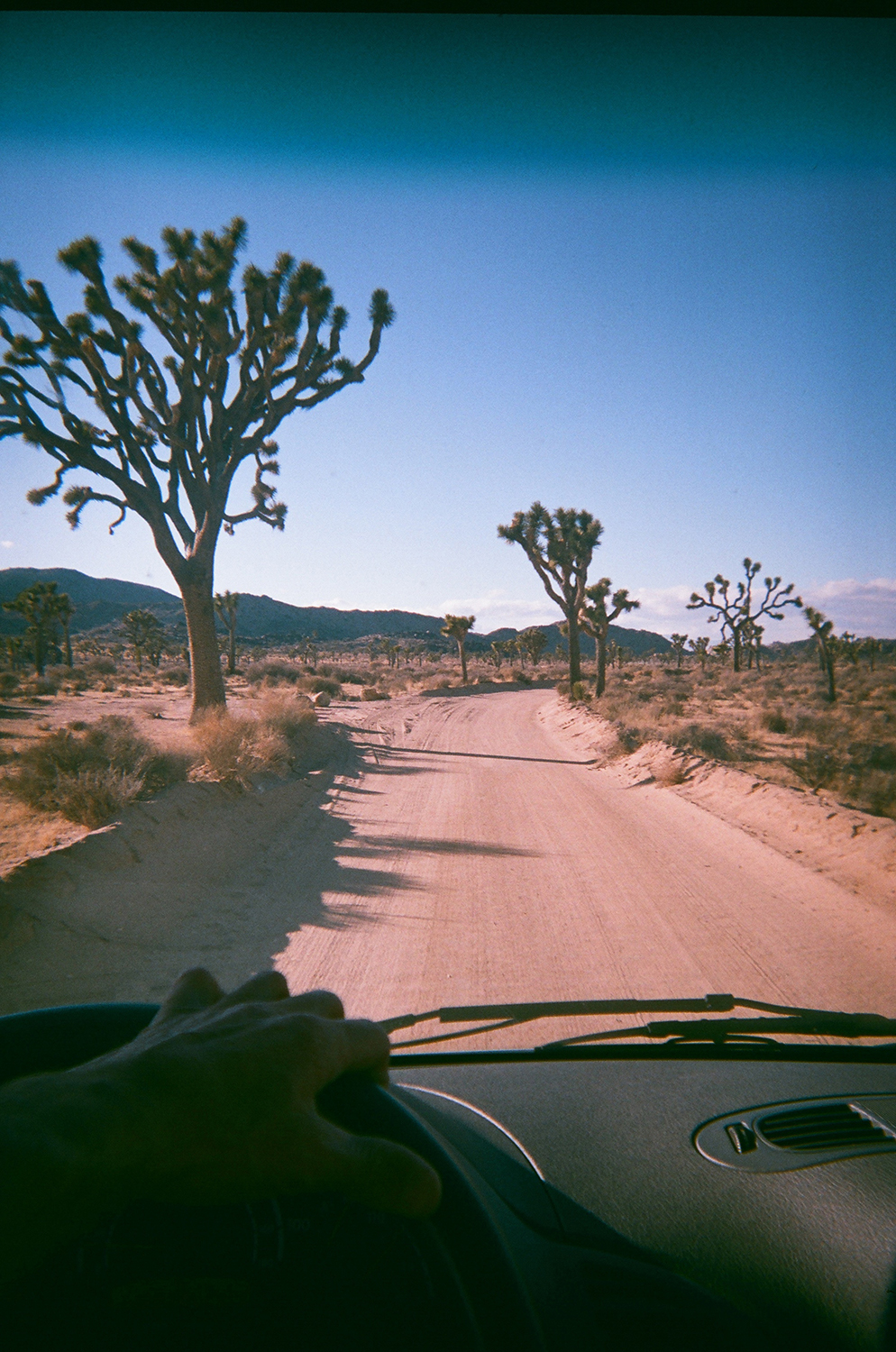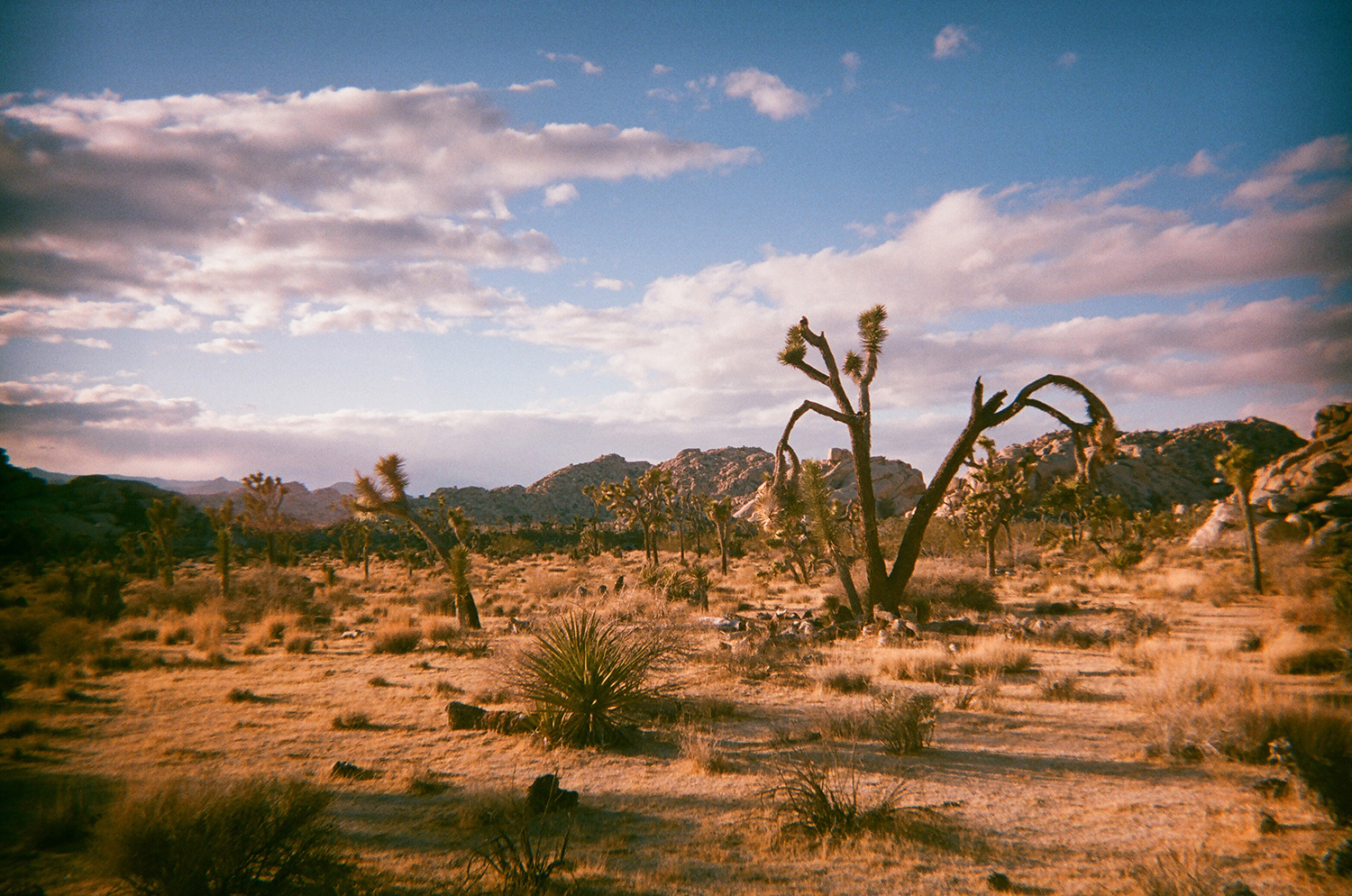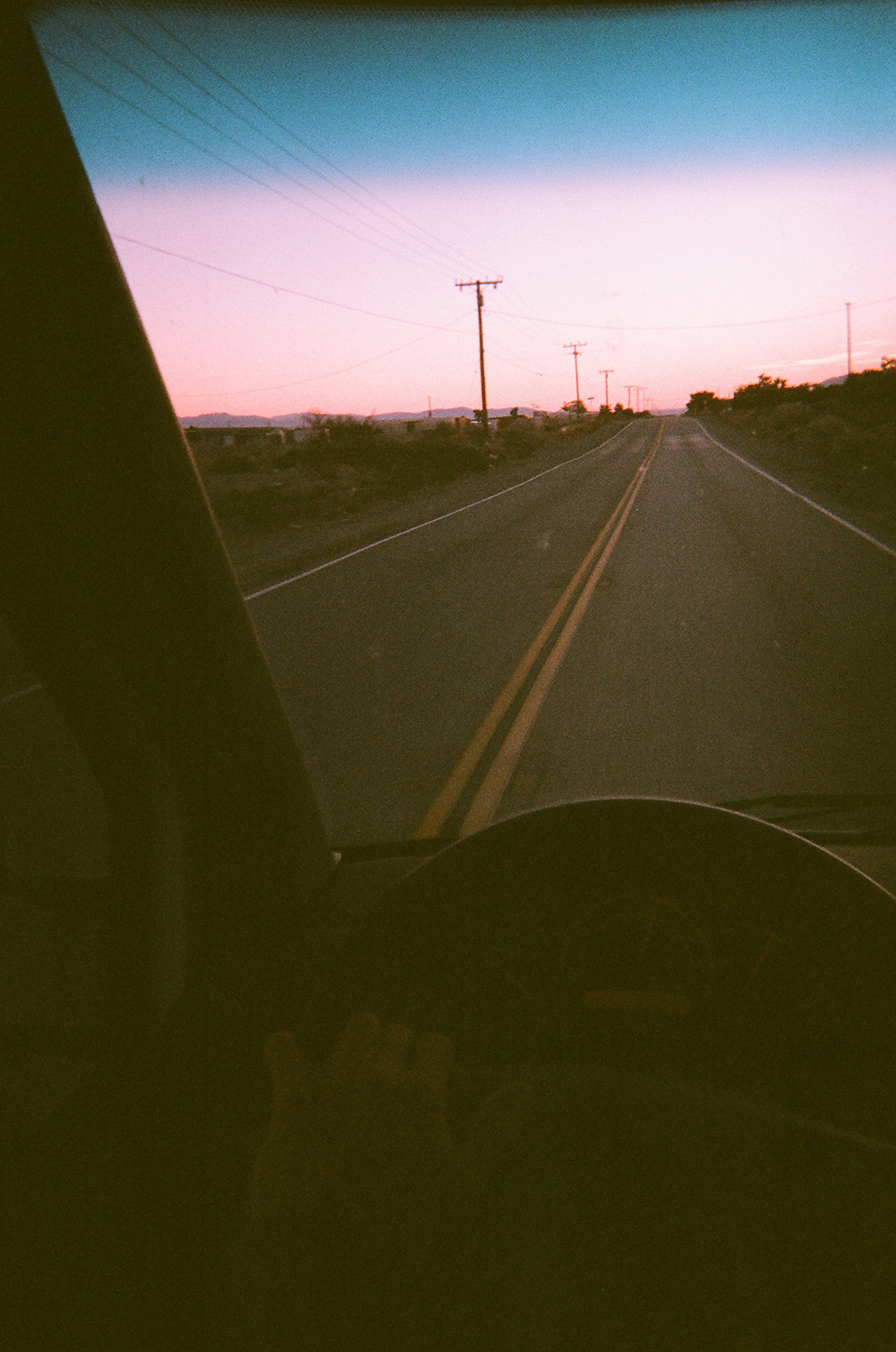Did you have any interesting experiences along the way?
I taped some pink gel over the lens of the disposal camera. I wanted to give the photos a pink tint. Not sure if it worked all that well. Anyway, I took off one morning at about 4:00 AM. I mostly just walked around the desert thinking about things. This alone time is something I’ve been used to having my whole life – just taking off and disappearing for a while, reading books, writing in my journal, etc. But that’s going to change now that we have a kid. So I thought mostly of Adler, how now when I leave I kiss both my wife and baby girl goodbye. My wife and I are always grappling with whether or not we want to continue living here in the California rat race or disappear somewhere remote, off the grid, I don’t know, raise animals, get a job at the local library… And that’s mostly what I though about while taking these photos. I was reading a great book by Lionel Terray called Conquistadors of the Useless. While sitting by a fire one morning I read this quote: “To live in society at all means by implication a certain submission to the will of others…” I thought about that.
What was the biggest challenge (if any) you had with the project?
No real challenges. I wanted to shoot in sequence to tell the story of leaving and returning. I couldn’t see the photo count in the little window so I never knew how many photos I had left, so I don’t even think I shot the whole roll. One shot didn’t come out that I wish did. One night during the trip I heard that Lemmy from Motorhead died. I’ve been a fan of his since the early 80’s. My best friend Mike Kennett turned me into them. Mike was all about Motorhead. He went to a ton of shows – even had a huge tattoo of the Motorhead dog on his arm. Mike died of cancer a few years ago. So I went to this weird bar in Joshua Tree and did a few shots for Lemmy and Mike. I took photos but it was too dark.
